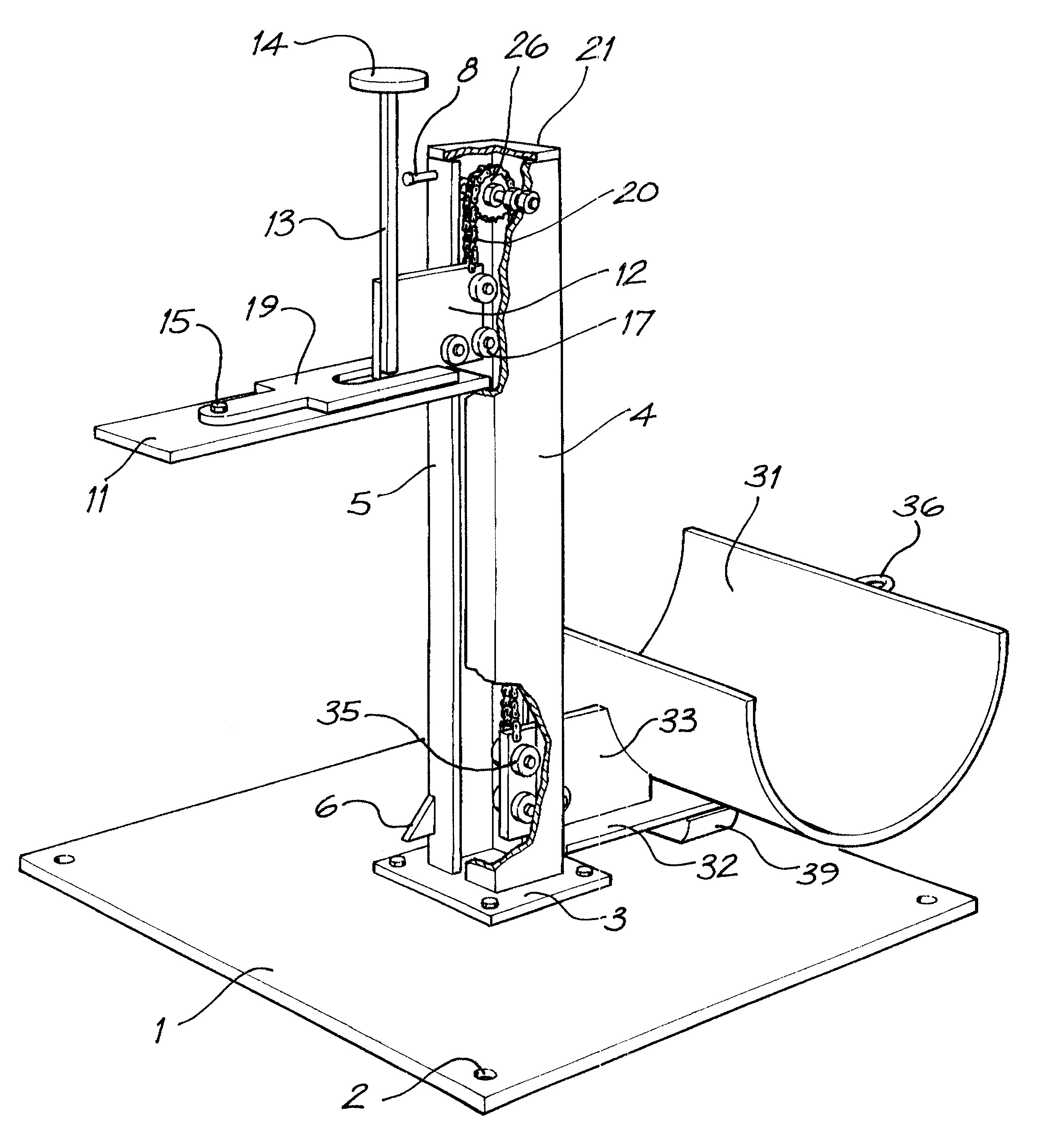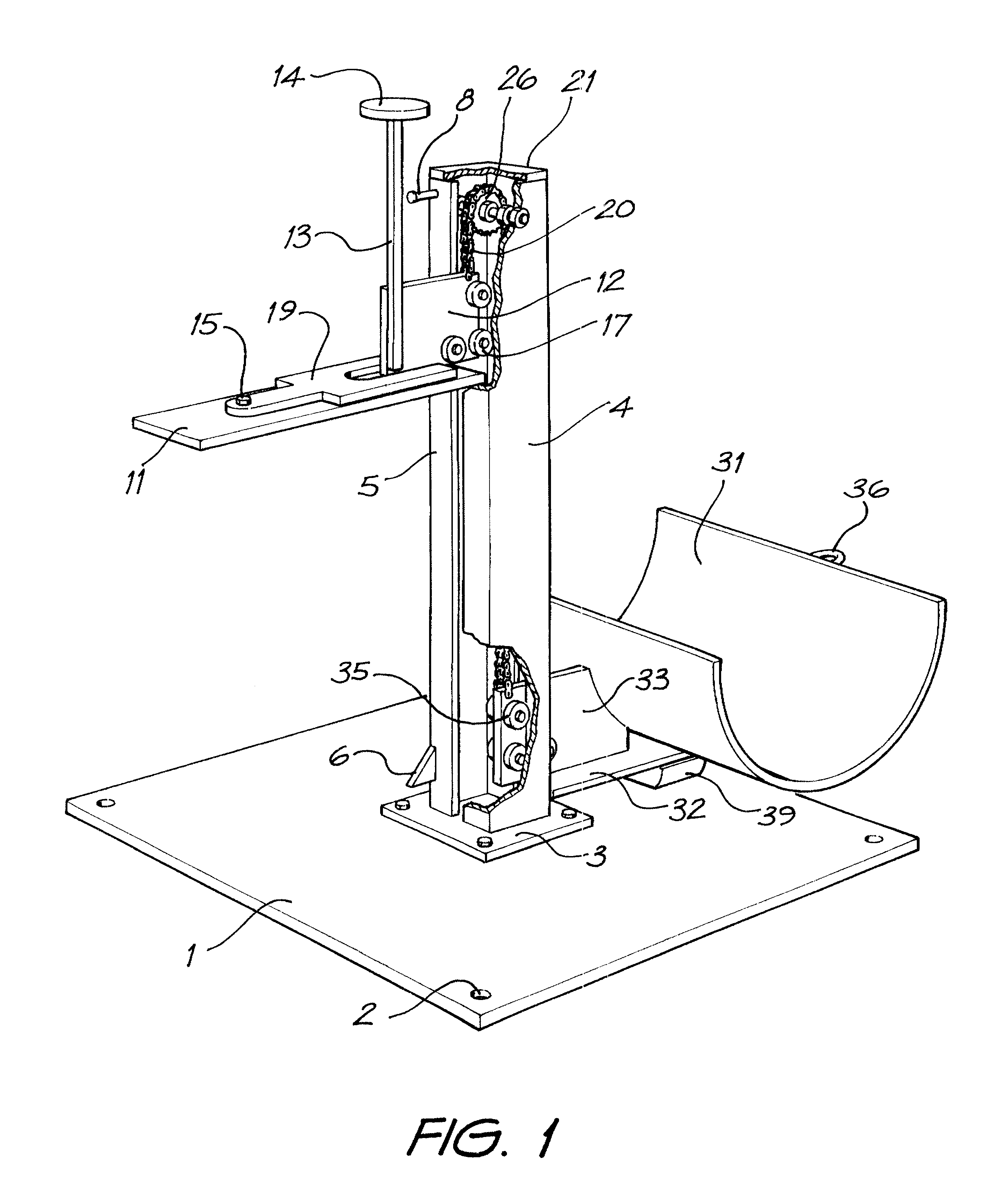Shearing lifting jack
a lifting jack and jack technology, applied in the field of sheep shearing jacks, can solve the problems of minor nicks and grazes, requires strength and stamina, etc., and achieve the effects of easy dragging a sheep, high engineering tolerance, and fast and easy shearing
- Summary
- Abstract
- Description
- Claims
- Application Information
AI Technical Summary
Benefits of technology
Problems solved by technology
Method used
Image
Examples
Embodiment Construction
Referring generally to the Figures and especially FIG. 1, there is shown a shearing lifting jack according to a first embodiment of the invention. A base plate 1 is preferably made from 5 to 8 mm mild steel plate and has an area of 1 sq m. The base plate 1 is designed to support the total structure of the shearing lifting jack. The base plate 1 has an outer set of four holes 2 in each corner. Screws or bolts (not illustrated) are used to affix the base plate 1 to the floor or ground as required utilising this outer set of holes 2.
The base plate 1 also has four additional holes located approximately 150 mm apart near the centre by means of which there is attached to the base plate 1, by means of suitable nuts and bolts or other fasteners, a support plate 3 also with 4 holes in each corner corresponding to the centrally located holes in base plate 1.
Welded to the support plate 3 are two C-shaped steel sections, being a right half post 4 and left half post 5 which in combination form a...
PUM
 Login to View More
Login to View More Abstract
Description
Claims
Application Information
 Login to View More
Login to View More - R&D
- Intellectual Property
- Life Sciences
- Materials
- Tech Scout
- Unparalleled Data Quality
- Higher Quality Content
- 60% Fewer Hallucinations
Browse by: Latest US Patents, China's latest patents, Technical Efficacy Thesaurus, Application Domain, Technology Topic, Popular Technical Reports.
© 2025 PatSnap. All rights reserved.Legal|Privacy policy|Modern Slavery Act Transparency Statement|Sitemap|About US| Contact US: help@patsnap.com



